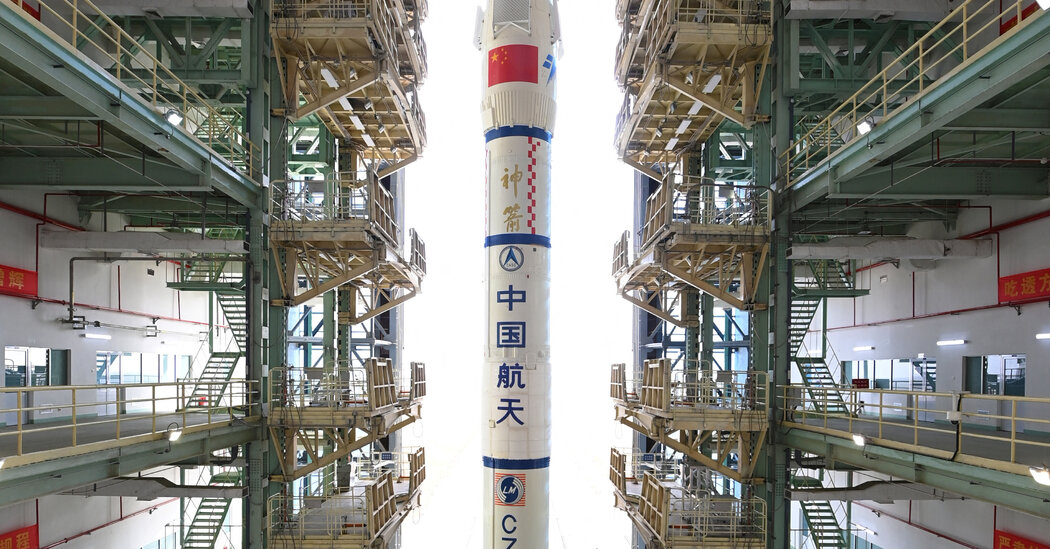On Tuesday night in China, a rocket as tall as a 20-story building will carry three astronauts to rendezvous with the country’s just-completed space station.
The mission, dubbed Shenzhou 15, marks a major milestone in China’s manned space program. Here’s what you need to know about the flight and why it’s important.
When is the launch and how can I watch it?
The mission will launch at 11:08 p.m. local time or 10:08 a.m. eastern time in the United States on Tuesday. CGTN, China’s state-owned television network, has announced that it will carry the launch live, although television broadcasts from China are often delayed by several seconds in case something goes wrong. The launch should be visible here with commentary in English: https://www.cgtn.com/tv
The missile launch will be a split-screen event for China, the latest in a long line of technological achievements for the country, even as many of its citizens have taken to the streets angrily against the tight pandemic controls.
Who is going into space and why are they going?
Three men will be aboard Shenzhou 15: Fei Junlong, Deng Qingming and Zhang Lu. China selected its oldest and most experienced team of astronauts to pilot the newly completed space station for the next six months. Mr. Fei, the spaceflight commander, first went into space in 2005 and is 57 years old.
“I am very proud and excited to be able to go to space again for my country,” he said.
The first piece of the Tiangong space station, the Tianhe core module, was launched last year. Two uncrewed parts of the orbital base, Wentian and Mengtian, were launched in separate flights in July and October, each docked at Tianhe, completing construction of the space station.
Tianhe’s core module has had trios of astronauts aboard for short stints since last year. But Tuesday’s launch marks the beginning of the space station’s continued occupation, with overlapping quarters by two crews of astronauts. The three Shenzhou 15 astronauts will fly to the space station and spend a week with the astronauts already there from Shenzhou 14 in a coordinated role exchange similar to what happens on the International Space Station. The Shenzhou 14 astronauts will then fly back to China, while the Shenzhou 15 astronauts will remain aboard Tiangong until May, when they will be replaced by another team.
While the first astronauts will all be from China, officials on Monday said they would welcome astronauts from other countries.
Where did the rocket come from?
China has four space rocket launch sites across the country. The only one for manned expeditions is the one used on Tuesday: the Jiuquan Satellite Launch Center, in the northwest of the country.
Jiuquan is located 240 kilometers into the Gobi Desert from the nearest town, Jiayuguan in Gansu Province. Construction of the center began in 1958, when it was built for China’s intercontinental ballistic missile development. Foreigners and even most Chinese citizens are usually not allowed near the site.
On Monday and Tuesday, journalists from two foreign news organizations were given unusual access to the launch center. They were two New York Times journalists and a Japanese Kyodo News photographer. Each visitor first had to spend a week locked in a quarantine room in a village hotel about 50 miles away and pass daily PCR tests. Foreign journalists paid for their travel, accommodation and quarantine.
The quarantine was part of extensive precautions to prevent the Covid-19 virus from reaching the space center again. Due to an outbreak last year, work at the site was briefly interrupted.
Li you contributed to Jiuquan Satellite Launch Center research.

